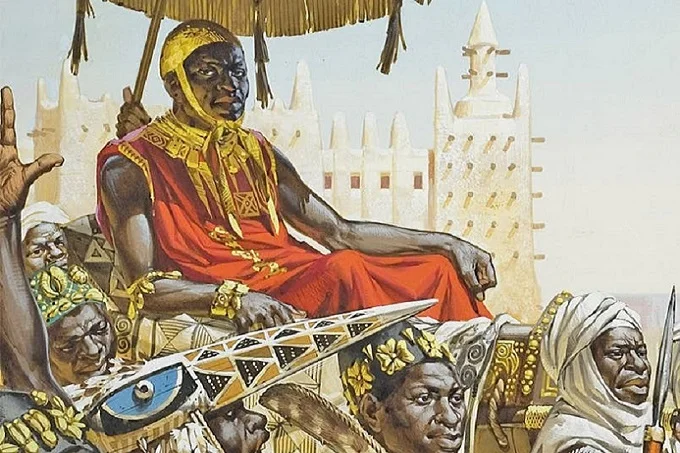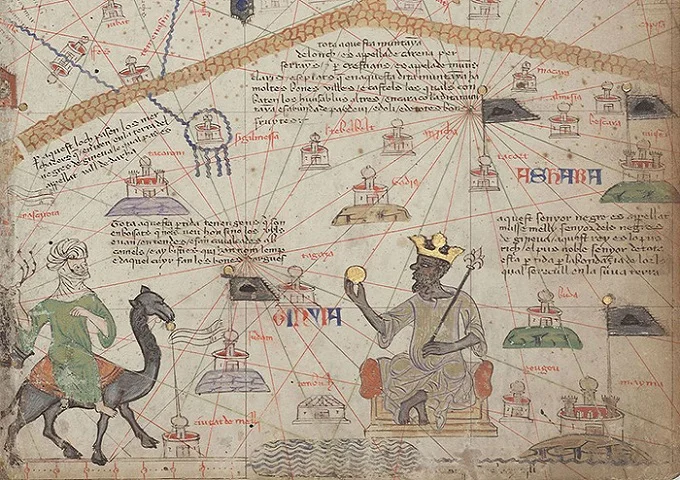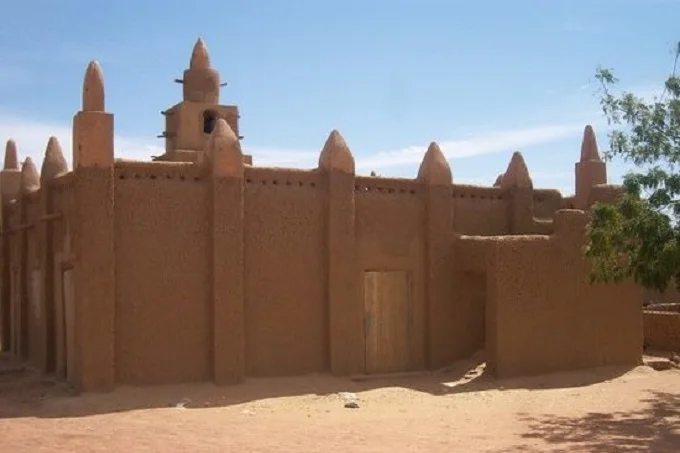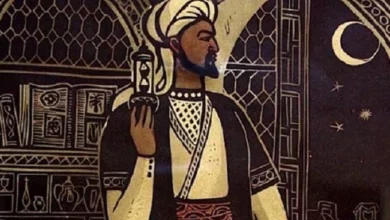Story of the king of kings, the richest man in history: Mansa Musa and his golden empire

How much money did Mansa Musa have? The net worth of Mansa Musa, as of today, is estimated to be US$400 billion. The story of the richest man in the world, from Africa, that acquired indescribable wealth.
For four years now, Jeff Bezos, the founder of Amazon, has been recognized as the richest man on the planet. His fortune is estimated at $ 177 billion. Nevertheless, the title of the richest man in history still does not shine for him. It has long been owned by Mansa Musa, the legendary ruler of the West African empire of Mali.
Mansa was so rich that, with his generous gifts, could one day bring down the economy of an entire country. How did Manse Musa acquire wealth, which historians call ‘indescribable’, create a great empire, and why did everything disappear after his death?
Mansa Musa net worth
All the stories about Musa’s fabulous wealth are incredibly breathtaking. Now it is almost impossible to figure out how rich and powerful he really was. All historians agree that Mansa Musa was richer than anyone could describe.
In 2012, the American website Celebrity Net Worth tried to calculate how much this person’s wealth reached. The publication received an amount of $400 billion as Mansa’s current net worth. Experts, however, argue that the size of Musa’s condition simply cannot be limited to any framework and described by a certain number.
As a comparison to this definition, a list of the 10 richest people of all time:
- Mansa Musa (1280-1337, king of the Malian Empire) – indescribable wealth;
- Augustus Caesar (63 BC – 14 AD, Roman emperor) – $4.6 trillion
- Zhao Xu (1048-1085, Emperor Song Shenzong in China) – incalculable wealth;
- Akbar I (1542-1605, emperor of the Indian dynasty of the Great Mughals) – innumerable wealth;
- Andrew Carnegie (1835-1919, Scottish-American industrialist) – $ 372 billion
- John D. Rockefeller (1839-1937), American business tycoon) – $ 341 billion
- Nikolai Alexandrovich Romanov (1868-1918, Russian Tsar) – $ 300 billion
- Mir Osman Ali Khan (1886-1967, King of India) – $ 230 billion
- William the Conqueror (1028-1087) – $ 229.5 billion
- Muammar Gaddafi (1942-2011, longtime ruler of Libya) – $ 200 billion
The Mansa and his empire
Mansa Musa was born into a royal family in 1280. His older brother Mansa Abu Bakr ruled Mali until 1312. Then he decided to abdicate the throne and go in search of adventures on a long journey. Abu Bakr was simply obsessed with the Atlantic Ocean. What lay beyond its borders endlessly attracted the king. He equipped a gigantic expedition of 2,000 ships. They were all laden with various riches. Thousands of men, women, and slaves went to accompany the ruler-adventurer.
Information about the completion of this journey has not been preserved. Some historians believe that the fleet has landed on the shores of South America. A settlement was organized there. What happened next is, again, no one knows. There is no historical confirmation of this version.
Mansa Musa inherited the throne of the empire. He was a wise ruler. Under his rule, the borders of the state expanded significantly. Musa conquered more than two dozen cities, including Timbuktu. The borders of the great empire of Mali stretched at that time from the Atlantic coast to modern Niger. They included significant parts of present-day Senegal, Mauritania, Mali, Burkina Faso, Niger, Gambia, Guinea-Bissau, Guinea, and Cote d’Ivoire.
Huge territories are huge resources. At that time, the main ones were gold, ivory, and salt. According to experts, Mali then accounted for half of all the gold in the Old World. Like all kings of that time, Mansa Musa possessed the wealth of his country undividedly.
The legendary pilgrimage to Mecca
Despite all the fabulous wealth of Mali, the empire itself remained little known to the rest of the world. Everything changed thanks to one significant historical event. Mansa Musa was a very devout Muslim. One day he decided to make a pilgrimage to Mecca. To do this, it was necessary to overcome many kilometers of the sands of the Sahara and Egypt.
The king left his homeland accompanied by a grandiose caravan of 60,000 people. Mansa Musa took his entire royal court, officials, soldiers, merchants, camel drivers, and 12,000 slaves. To feed all this darkness, people were driven by huge flocks of sheep and goats. This was not a caravan – it was a huge city moving through the desert. Musa even took a mobile mosque with him so that he could pray on the way.
All the splendor and luxury of this spectacle is difficult to imagine. One has only to say that all people, including slaves, were dressed in gold brocade and the best Persian silks. More than a hundred camels were loaded exclusively with gold. When the caravan reached Cairo, all the inhabitants were incredibly amazed at the brilliance of this caravan. Nobody has seen such riches before. It was a fantastic sight.
Cairo suffered disaster due to the generosity of Mansa Musa
Mansa Musa made such an unprecedented sensation in Cairo that even al-Umari, who visited the city 12 years later, heard local stories about him. The king distributed gold so generously to the right and to the left that it was incredibly devalued. Over the next decade, prices for the precious metal remained at record lows. This led to an economic crisis.

When Mansa Musa was driving back through Egypt, he tried to help this grief. The king bought his gold at exorbitant prices. Many historians say that Musa spent all the gold he had on this. Because of this, there are no songs of praise about Musa in his homeland. Malians believe that the king wasted the wealth of the country.
Mali becomes famous all over the world
Of course, Mansa Musa squandered a tremendous amount of gold during his pilgrimage. But it was precisely this excessive generosity that attracted such close attention of the whole world to a hitherto unknown country. It literally put Mali on the map. The Catalan Atlas from 1375 contains an image of an African ruler seated on a golden throne atop Timbuktu, holding a gold bar.

Timbuktu has become a kind of African El Dorado. People came here from all over the world to have at least one eye look at the local wonders and fabulous riches. Until the 19th century, the city retained the mythical status of a lost golden city at the end of the world. It served as a kind of beacon for both Old World adventurers and explorers. All this is thanks to that long-standing legendary pilgrimage of Mansa Musa.
The king returned from Mecca with several Islamic scholars. Among them were even direct descendants of the Prophet Muhammad himself and the architect Abu es Haq es Saheli. It was according to his project that Mansa Musa built the famous Djinguereber Mosque in Mali.

In addition to generously sponsoring art and architecture, the king also widely encouraged the development of literature and education in general. Many schools and libraries were built under him. Timbuktu became the scientific center of that time. Scientists from all over the world came here. Subsequently, the University of Sankore (Sankoré Madrasah) was formed on this basis.
Mansa’s death
Modern historians try in vain to estimate the size of Mansa Musa’s wealth. Unfortunately, this is not possible. You cannot embrace the immensity. After the death of the African king in 1337 at the age of 57, his sons inherited the empire. They could not adequately continue the work of their father. The state was fragmented, and the empire ceased to exist. The late arrival of the Europeans only made them witnesses to the agony of a great state.
Experts say that the history of the medieval period, even today, is viewed only as of the history of the West. Therefore, the Mali Empire and the history of Mansa Musa are not so widely known. The late arrival of Europeans in the region was the final nail in the empire’s coffin.
Suppose the Europeans saw the empire in its golden age, during the time of Musa, when it was at the peak of its military and economic power! A couple of hundred years later, only a shadow remained of him, but everything could have been different…
Today it is incomprehensible how immense the wealth of Mansa Musa was, but historians agree on one thing: he was the richest man in history. Those images in which he holds a golden scepter, sitting on a golden throne, with a golden bowl in his hands and a golden crown on his head. Imagine as much gold as your imagination, and then double it – it will seem like the truth.




